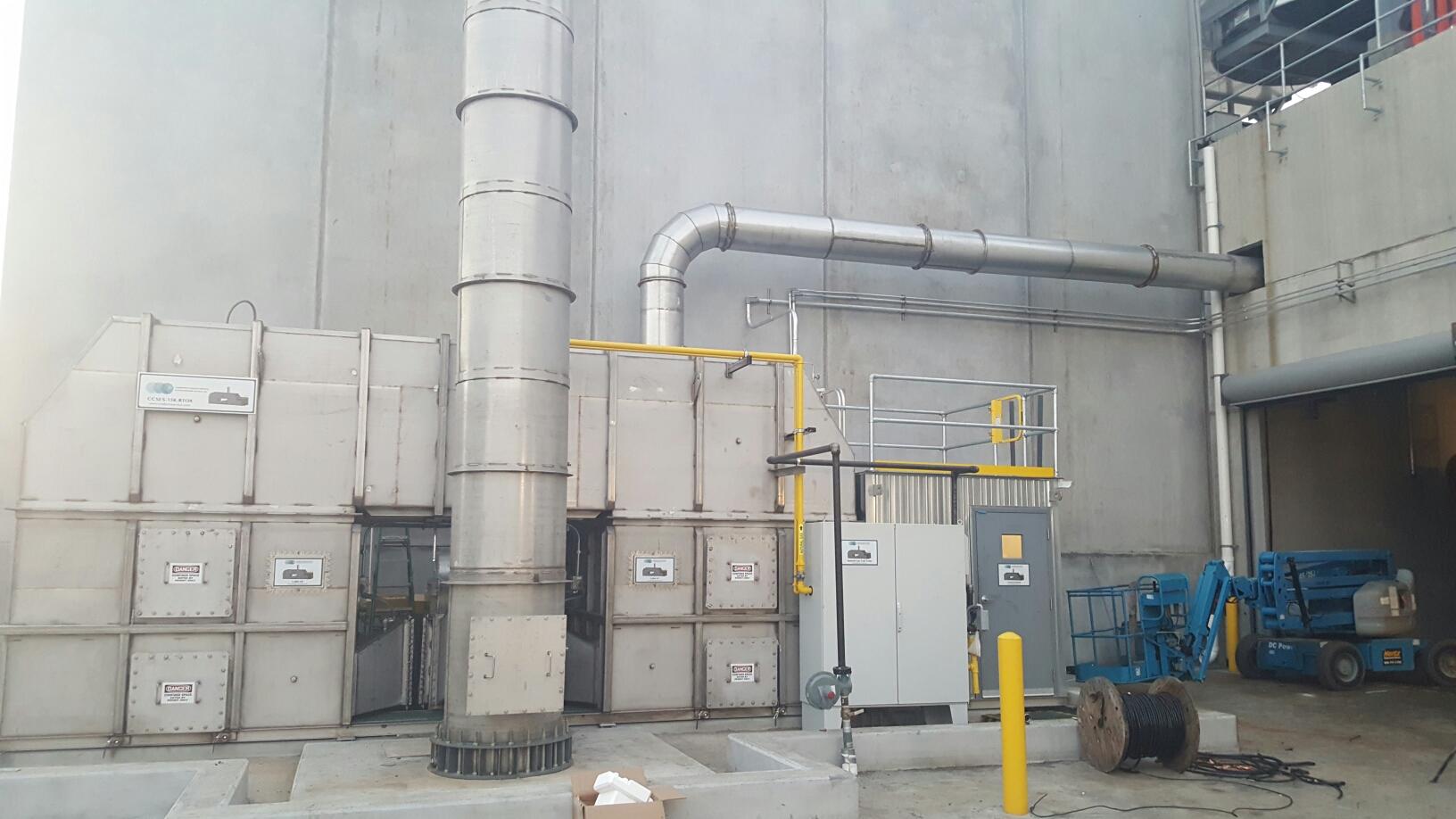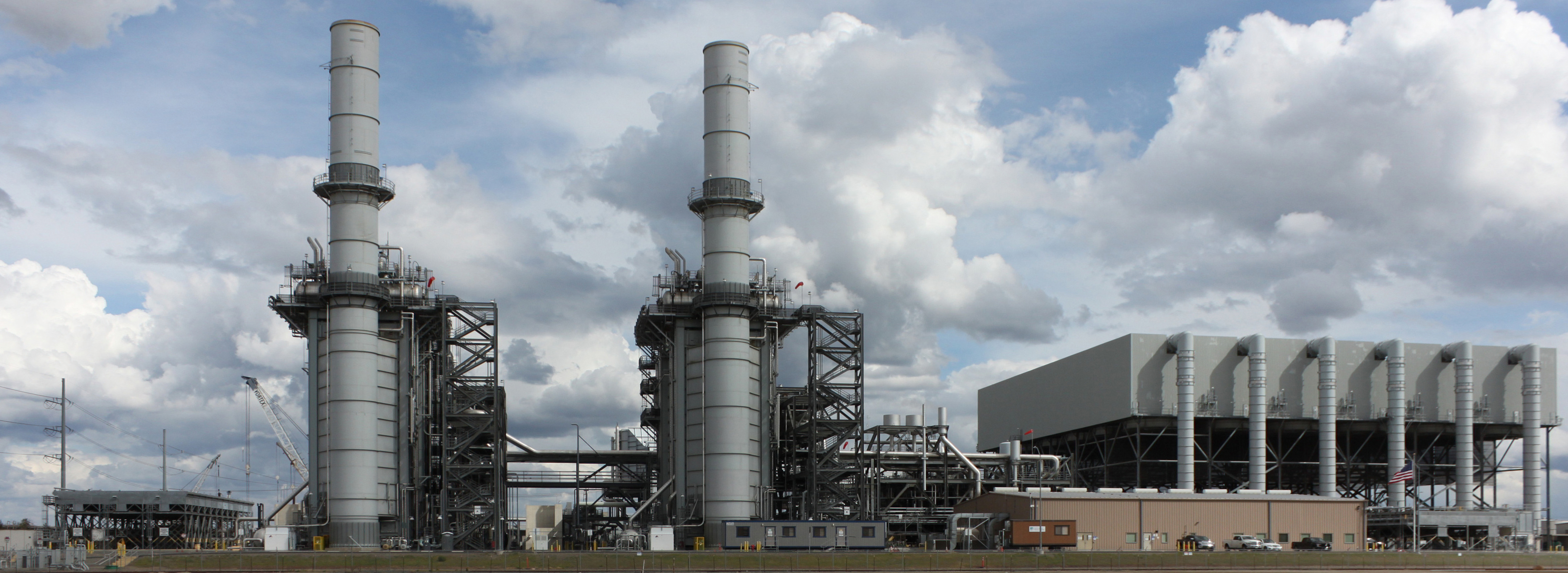Waste heat recovery unit on:
[Wikipedia]
[Google]
[Amazon]
 A waste heat recovery unit (WHRU) is an energy recovery
A waste heat recovery unit (WHRU) is an energy recovery
 Waste heat found in the
Waste heat found in the
 A waste heat recovery unit (WHRU) is an energy recovery
A waste heat recovery unit (WHRU) is an energy recovery heat exchanger
A heat exchanger is a system used to transfer heat between a source and a working fluid. Heat exchangers are used in both cooling and heating processes. The fluids may be separated by a solid wall to prevent mixing or they may be in direct contac ...
that transfers heat from process outputs at high temperature to another part of the process for some purpose, usually increased efficiency. The WHRU is a tool involved in cogeneration. Waste heat may be extracted from sources such as hot flue gases from a diesel generator, steam from cooling towers, or even waste water from cooling processes such as in steel cooling.
Heat recovery units
 Waste heat found in the
Waste heat found in the exhaust gas
Exhaust gas or flue gas is emitted as a result of the combustion of fuels such as natural gas, gasoline (petrol), diesel fuel, fuel oil, biodiesel blends, or coal. According to the type of engine, it is discharged into the atmosphere through ...
of various processes or even from the exhaust stream of a conditioning unit can be used to preheat the incoming gas. This is one of the basic methods for recovery of waste heat. Many steel making plants use this process as an economic method to increase the production of the plant with lower fuel demand. There are many different commercial recovery units for the transferring of energy from hot medium space to lower one:
* Recuperator
A recuperator (electro- end carbogidro-) - is a special purpose countercurrent exchange, counter-flow energy recovery heat exchanger positioned within the supply and exhaust air streams of an air handling system, or in the exhaust gases of an in ...
s: This name is given to different types of heat exchanger
A heat exchanger is a system used to transfer heat between a source and a working fluid. Heat exchangers are used in both cooling and heating processes. The fluids may be separated by a solid wall to prevent mixing or they may be in direct contac ...
that the exhaust gases are passed through, consisting of metal tubes that carry the inlet gas and thus preheating the gas before entering the process. The heat wheel is an example which operates on the same principle as a solar air conditioning unit.
* Regenerators: This is an industrial unit that reuses the same stream after processing. In this type of heat recovery, the heat is regenerated and reused in the process.
* Heat pipe exchanger: Heat pipes are one of the best thermal conductors. They have the ability to transfer heat hundred times more than copper. Heat pipes are mainly known in renewable energy technology as being used in evacuated tube collectors. The heat pipe is mainly used in space, process or air heating, in waste heat from a process is being transferred to the surrounding due to its transfer mechanism.
* Thermal wheel or rotary heat exchanger: consists of a circular honeycomb matrix of heat absorbing material, which is slowly rotated within the supply and exhaust air streams of an air handling system.
* Economizer: In case of process boilers, waste heat in the exhaust gas is passed along a recuperator that carries the inlet fluid for the boiler and thus decreases thermal energy intake of the inlet fluid.
* Heat pumps
A heat pump is a device that uses electricity to transfer heat from a colder place to a warmer place. Specifically, the heat pump transfers thermal energy using a heat pump and refrigeration cycle, cooling the cool space and warming the warm s ...
: Using an organic fluid that boils at a low temperature means that energy could be regenerated from waste fluids.
* Run around coil: comprises two or more multi-row finned tube coils connected to each other by a pumped pipework circuit.
* Particulate filters (DPF) to capture emission by maintaining higher temperatures adjacent to the converter and tail pipes to reduce the amount of emissions from the exhaust.
A waste heat recovery boiler (WHRB) is different from a heat recovery steam generator ( HRSG) in the sense that the heated medium does not change phase.
Heat to power units
According to a report done by Energetics Incorporated for the DOE in November 2004 titled ''Technology Roadmap'' and several others done by theEuropean Commission
The European Commission (EC) is the primary Executive (government), executive arm of the European Union (EU). It operates as a cabinet government, with a number of European Commissioner, members of the Commission (directorial system, informall ...
, the majority of energy production from conventional and renewable resources are lost to the atmosphere due to onsite (equipment inefficiency and losses due to waste heat) and offsite (cable and transformers losses) losses, that sums to be around 66% loss in electricity value. Waste heat of different degrees could be found in final products of a certain process or as a by-product in industry such as the slag
The general term slag may be a by-product or co-product of smelting (pyrometallurgical) ores and recycled metals depending on the type of material being produced. Slag is mainly a mixture of metal oxides and silicon dioxide. Broadly, it can be c ...
in steelmaking
Steelmaking is the process of producing steel from iron ore and/or scrap. Steel has been made for millennia, and was commercialized on a massive scale in the 1850s and 1860s, using the Bessemer process, Bessemer and open hearth furnace, Siemens-M ...
plants. Units or devices that could recover the waste heat and transform it into electricity are called WHRUs or ''heat to power units'':
* An organic Rankine cycle (ORC) unit uses an organic fluid as the working fluid. The fluid has a lower boiling point than water to allow it to boil at low temperature, to form a superheated gas that can drive the blade of a turbine and thus a generator.
* Thermoelectric ( Seebeck, Peltier, Thomson effects) units may also be called WHRU, since they use the heat differential between two plates to produce direct current
Direct current (DC) is one-directional electric current, flow of electric charge. An electrochemical cell is a prime example of DC power. Direct current may flow through a conductor (material), conductor such as a wire, but can also flow throug ...
(DC) power.
* Shape-memory alloys can also be used to recover low temperature waste heat and convert it to mechanical action or electricity.
Applications
* Traditionally, waste heat of low temperature range (0-120 °C, or typically under 100 °C) has not been used for electricity generation despite efforts by ORC companies, mainly because the Carnot efficiency is rather low (max. 18% for 90 °C heating and 20 °C cooling, minus losses, typically ending up with 5-7% net electricity). * Waste heat of medium (100-650 °C) and high (>650 °C) temperature could be used for the generation of electricity or mechanical work via different capturing processes. * Waste heat recovery system can also be used to fulfill refrigeration requirements of a trailer (for example). The configuration is easy as only a waste heat recovery boiler and absorption cooler is required. Furthermore, only low pressures and temperatures needed to be handled.Advantages
The recovery process will add to the efficiency of the process and thus decrease the costs of fuel and energy consumption needed for that process.Indirect benefits
* Reduced pollution:Thermal pollution
Thermal pollution, sometimes called "thermal enrichment", is the degradation of water quality by any process that changes ambient water temperature. Thermal pollution is the rise or drop in the temperature of a natural body of water caused by h ...
and air pollution
Air pollution is the presence of substances in the Atmosphere of Earth, air that are harmful to humans, other living beings or the environment. Pollutants can be Gas, gases like Ground-level ozone, ozone or nitrogen oxides or small particles li ...
will dramatically decrease since less flue gases of high temperature are emitted from the plant since most of the energy is recycled.
* Reduced equipment sizes: As fuel consumption reduces, the control and security equipment for handling the fuel decreases. Also, filtering equipment for the gas is no longer needed in large sizes.
* Reduced auxiliary energy consumption: Reduced equipment sizes means another reduction in the energy fed to those systems like pumps, filters, fans,...etc.
Disadvantages
* Capital cost to implement a waste heat recovery system may outweigh the benefit gained in heat recovered. It is necessary to put a cost to the heat being offset. * Often waste heat is of low quality (temperature). It can be difficult to efficiently utilize the quantity of low quality heat contained in a waste heat medium. * Heat exchangers tend to be larger to recover significant quantities which increases capital cost. * Maintenance of equipment: Additional equipment requires additional maintenance cost. * Units add size and mass to overall power unit. Especially a consideration on the mobile power units of vehicles.Examples
* The Cyclone Waste Heat Engine is designed to generate electricity from recovered waste heat energy using a steam cycle. * International Wastewater Heat Exchange Systems is another company addressing waste heat recovery systems. Focused on multi-unit residential, publicly shared buildings, industrial applications and district energy systems, their systems use the energy in waste water for domestic hot water production, building space heating and cooling. * Motorsport seriesFormula One
Formula One (F1) is the highest class of worldwide racing for open-wheel single-seater formula Auto racing, racing cars sanctioned by the Fédération Internationale de l'Automobile (FIA). The FIA Formula One World Championship has been one ...
introduced waste heat recovery units in 2014 under the name MGU-H.
See also
* Cogeneration or combined heat and power (CHP) * Heat recovery steam generator and organic Rankine cycle * Electric turbo compound * Exhaust heat recovery system * Thermal oxidizer * Pinch analysis * Waste-to-energy plantReferences
{{reflist, 2 Heat exchangers Energy recovery Renewable energy Cooling technology fr:Chaudière de récupération